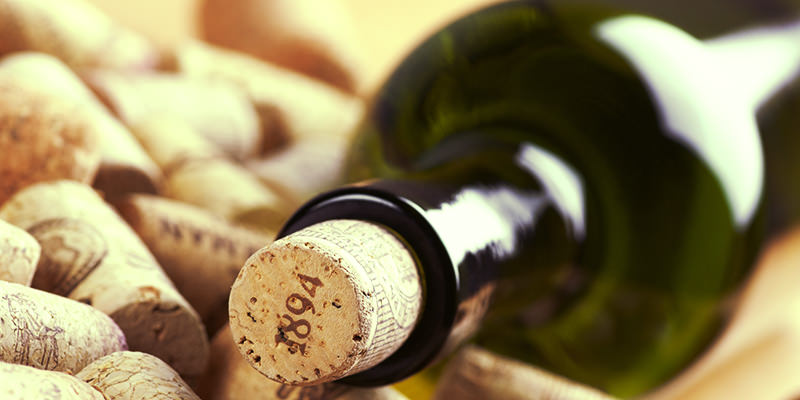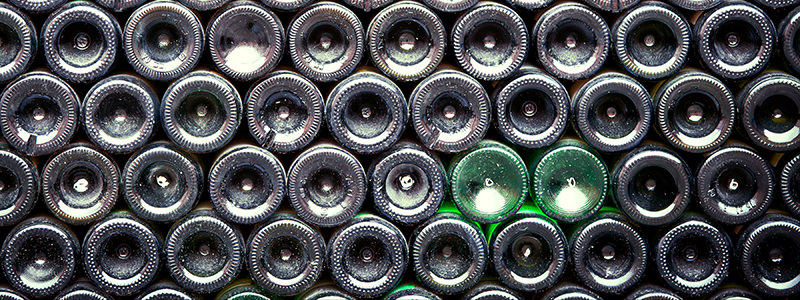There are plenty of different bottle colors out there, but the most common color is green. While red Bordeaux’s are typically kept in dark green bottles, dry white Bordeaux’s are kept in lighter green ones. Burgundies and Rhones, along with Mosels, Alsaces, and plenty of Champagnes are also kept in green bottles. When it comes to wine, green bottles are everywhere. We can all attest to the beauty of a glowing, green wine bottle, but besides aesthetics, what’s the purpose of storing wine in green glass?
The primary reason for keeping wine in green bottles is to prevent wines from oxidation, a common wine fault. A little bit of oxygen is good for a wine, because it allows the flavors to open up – which is why we decant certain wines. However, when a wine comes into too much contact with oxygen, it starts to get more and more dull. Oxidized wine doesn’t have, well, most of what makes a wine taste good. If your wine tastes like vinegar, you have oxidation to blame.
 The good news is that wines naturally contain antioxidants that prevent dreaded oxidation from occurring. However, sunlight can often break down both a wine’s antioxidants and its tannins. If these substances are broken down, they aren’t able to do their job protecting the wine. Tinted glass blocks out this sunlight, preserving antioxidants and allowing them to protect the wine from oxidation as it ages.
The good news is that wines naturally contain antioxidants that prevent dreaded oxidation from occurring. However, sunlight can often break down both a wine’s antioxidants and its tannins. If these substances are broken down, they aren’t able to do their job protecting the wine. Tinted glass blocks out this sunlight, preserving antioxidants and allowing them to protect the wine from oxidation as it ages.
Some sources say that green glass actually offers less sun protection than amber glass, which has some people switching to amber, but not many. Much like punts, it’s difficult to imagine many wine bottles without the traditional green bottle. Plus, it makes an excellent source for wine crafts!

